Today in the final installment of a three-part interview (read part one here and part two here), SevenPonds speaks with Pashta MaryMoon, Death Midwife at Journeys Beyond, and co-founder of CINDEA (Canadian Integrated Network of Death Education and Alternatives). Topics covered include organizing home funerals, mediation, and the future of death midwifery in North America. Pashta lives and works in Victoria, BC, Canada.
Juniper: When you facilitate home funerals, do you find that the family members who could prepare a body after death are interested and willing to do so? Do you encounter any squeamishness? If so, how do you navigate through that?
Pashta: Yes. This is one instance in which a Death Midwife can have an important role. We are so culturally trained out of caring for our dead that we believe it’s illegal, repulsive or simply not possible. The moment someone dies, the executor has control over the body, so it’s important to have them on board with the concept of a home funeral in order to give the whole family an opportunity to experience it. If the executor hasn’t been a primary caregiver, then they’re likely not the person who wants a home funeral. I had this situation come up recently. My role was to talk to the sibling who was the executor, to reassure her that yes, I’m an expert in home funerals, yes it’s legal, I know about all the needed paperwork, no you don’t have to contact a medical doctor immediately after death, and that yes, this is all very workable. I have the authority to say these things and be received, whereas there may be an assumption between family members that their knowledge comes only from personal research into unverified sources. My role is to explain the details, and affirm how simple and realistic this all can be. Sometimes this convincing works, and sometimes it doesn’t… Sometimes the executor doesn’t show up in time, and the people who want to do post-death care themselves just go ahead and do it.
Another related issue is around the education of other professionals. If a hospital or residential care center won’t release a body into the care of the family, or if a cemetery doesn’t know that a family can legally transport the remains of their loved one themselves, then a Home Funeral Guide or Death Midwife is needed to advocate on the family’s behalf.
Juniper: Do you have any recommendations for people to communicate their desire to organize a home funeral to other members of the family who may be resistant to the concept?
Pashta: In the USA, a good starting point is the National Home Funeral Alliance website; in Canada, look up CINDEA. Once you’ve discussed with your family the reasons why you want to do a home funeral, and you’ve gone to a reputable website where everyone can see that it’s legal, possible and not that hard to do, sometimes mediation is still required. That’s when it’s a good idea to find somebody in your state or province who has a background in alternative death education – they may not be a practicing Death Midwife, but they can be a good resource. There are many ways in which people are using their training, and I encourage the public to avail themselves of it. It’s not worth getting into a family feud over this issue – there are better ways to move through grief.
Juniper: Why do you think there is such a taboo around death in our culture?
Pashta: There has always been a taboo about death, but it’s been dealt with through ritualistic provisions. Loss of life: that’s a big thing. In a way, it’s bigger than birth, because you don’t know the person who’s being born, but you know and are attached to the person who has died. In the West, we’ve lost a lot of traditions that mediated the fear of death. Contributing factors include the American Civil War, shortly followed by the First and Second World Wars. Embalming became commonplace as families wanted to bury their dead at home, necessitating the preservation of remains over distance. The practice of embalming soon became an institutionalized status symbol, along with having a fancy coffin and a lot of flowers. In some ways, it’s no different than eating white bread. Why did we ever start? For no other reason than that it was at one time a status symbol.
Another factor is that many people living in urban centers are not living in operative communities – they don’t know their neighbors, and can’t call upon them in times of need. So of course they’re going to call the undertaker and funeral director instead, because they can’t do it alone. The more urbanized our lives are, the more institutionalized our lives and deaths will be. This is what the situation has become, but it doesn’t need to be that way.
Juniper: What is the greatest challenge you face in your work?
Pashta: The biggest challenge is the death taboo in our culture. It’s deeply ingrained, though only a couple generations old. I know people in their 30s who have stories of their grandparents taking care of their neighbors’ dead bodies. That “ick” factor is really strong though, and can be a complete block. There’s a lot of education that needs to be done, and CINDEA attempts that partly through the videos that can be found on the website depicting, step-by-step, how to do post-death care.
The other challenge comes from the funeral industry. While hospitals and residential care facilities may not know that home funerals are legal, funeral homes do, and they market their services in a disempowering way that insists they are the only ones skilled enough to deal with dead bodies. In the USA, there are some states where the funeral home industry has pushed through new regulations that have effectively cut off the practice of home funerals. One regulation necessitates that all the paperwork needs to be filed electronically; while it can be accessed online, printed out and filled by family members, only funeral homes can file those documents out electronically. So, even if a home funeral is done, the paperwork needs to be taken to a funeral home to be filed, and the funeral home charges them a full arrangement fee – anywhere from 1,000 to $3,000 for two or three forms.
Juniper: How do you envision the practice of Death Midwifery evolving over the next 10, 20, 50 years in North America?
Pashta: Baby boomers tend to separate themselves from tradition of any sort in favor of doing things their own way, so, as more of them are starting to make arrangements for their own parents, I see home funerals becoming much more commonplace. The ecological impact of traditional post-death practices in the West will also be a deciding factor for some people. Although I don’t believe we’ll ever get away from the status issue of traditional funeral care, I see a new kind of status arising around people who do home funerals and green burials, as the public becomes aware of their lighter carbon footprint.
I don’t think we’ll ever see a time when the services of funeral directors won’t be needed. There will always be people who don’t want to deal with it, and there isn’t always a home to bring a body back to. In some instances, a person who is living in residential care has family living in elsewhere in the country or the world. As hospice and palliative care evolve in their awareness of the overlap between their practices and home funerals, I hope to see “lying-in” rooms within those institutions where there will be an opportunity for a family to wash and dress the body, receive visitors and do some of the things that make a home funeral so powerful. Two to four years is the average amount of time that a person living in residential care will be there, and over that time relationships develop with the other residents. Right now, when someone dies in residential care and their body is taken away an hour later, the other residents and staff don’t get a chance to say goodbye — no one invites them to the funeral. So these lying-in rooms could provide a context for family, other residents and staff to mourn, to be witnessed and supported by each other. This is the longer-term, 10-20 year projection.
As more people learn about how they can take the care of their dead into their own hands, we’ll start to see funeral homes offer individual services to round out what a family doesn’t wish to take on, such as the transportation of remains, or the filing of paperwork. This is already happening, and I think it’s a wise move.
Juniper: Thank you so much for sharing your experience and insight with us. It’s been an honor.
Pashta: Thank you!

 Why is Death Midwifery Important? An Interview with Pashta MaryMoon, Part Three
Why is Death Midwifery Important? An Interview with Pashta MaryMoon, Part Three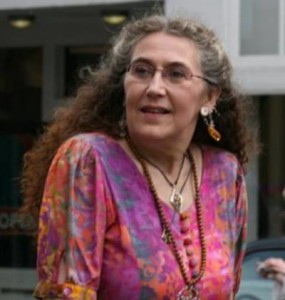
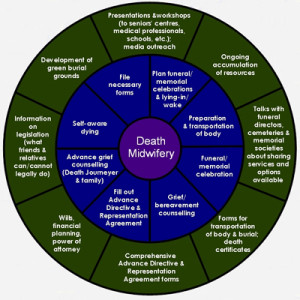


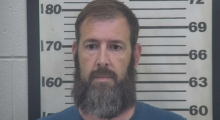
 Funeral Home Owner Chris Johnson Spending Halloween in Jail
Funeral Home Owner Chris Johnson Spending Halloween in Jail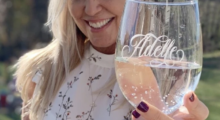
 Our Monthly Tip: Toast a Loved One with a Personalized Glass
Our Monthly Tip: Toast a Loved One with a Personalized Glass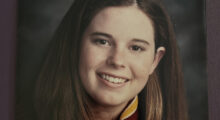
 My Cousin’s Death Taught Me the Meaning of Life
My Cousin’s Death Taught Me the Meaning of Life














